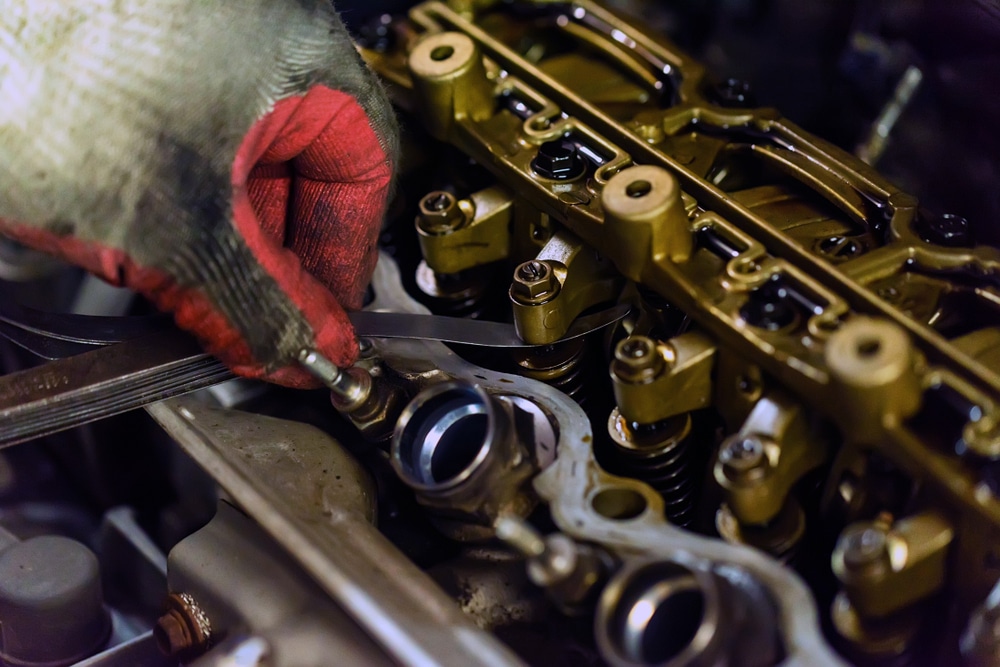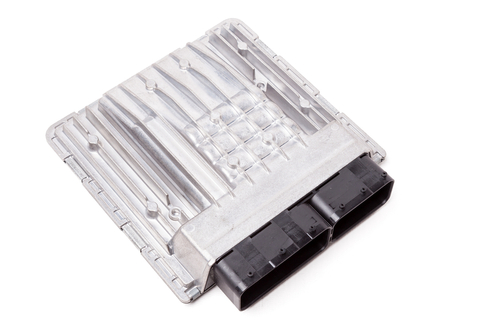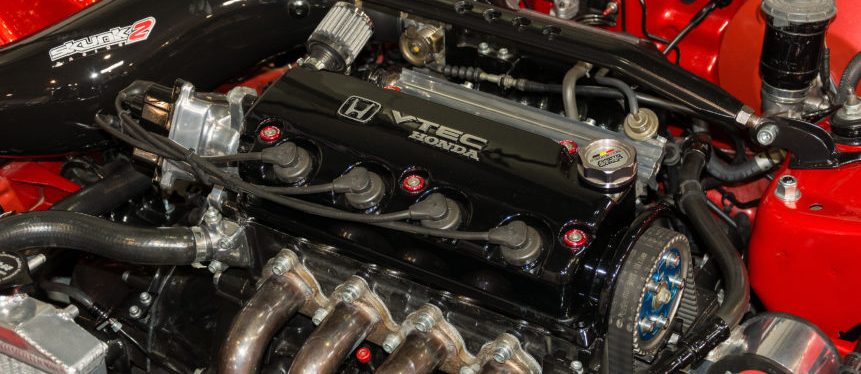Is your car’s check engine light on? You might be dealing with the P0022 diagnostic trouble code. This pesky code indicates a timing issue with the intake camshaft on Bank 2 of your engine.
The P0022 code means the camshaft timing is over-retarded, which can lead to poor engine performance and reduced fuel efficiency.

Don’t panic just yet! While it sounds complicated, understanding this code can help you tackle the problem head-on. Whether you’re a DIY mechanic or planning to visit a professional, knowing what you’re up against is half the battle.
So, buckle up and get ready to dive into the world of camshaft timing.
We’ll explore what causes this issue, how to diagnose it, and what you can do to get your engine purring like a kitten again.
Trust me, by the end of this article, you’ll be talking camshafts like a pro at your next barbecue!
Key Takeaways
- P0022 indicates over-retarded intake camshaft timing on Bank 2, affecting engine performance
- Symptoms include reduced power, poor fuel economy, and potential engine misfires
- Diagnosis often involves checking camshaft sensors, VVT components, and engine oil quality
Understanding the P0022 Code
The P0022 code is your engine’s way of saying, “Hey, something’s off with my timing!” It’s like your car’s trying to dance but keeps stepping on its own toes.
How the Engine Manages Timing
Your engine’s a bit of a control freak when it comes to timing.
It’s all about getting those intake and exhaust valves to open and close at just the right moment.
The camshaft is the maestro here, conducting this mechanical symphony.
When everything’s in tune, your engine purrs like a kitten. But throw in a P0022 code, and suddenly it’s like your engine’s trying to play jazz with a broken metronome.
The intake camshaft on Bank 2 is dragging its feet, showing up late to the party.
This timing hiccup can lead to poor performance, reduced fuel economy, and maybe even that dreaded Check Engine light giving you the stink eye from your dashboard.
Roles of ECM and PCM

Think of the Engine Control Module (ECM) and Powertrain Control Module (PCM) as the brains of the operation. They’re like the world’s most meticulous hall monitors, constantly checking if everything’s running on schedule.
These modules are always crunching numbers, analyzing data from various sensors.
When they notice the camshaft timing is off, they throw a fit – aka, they trigger the P0022 code.
The ECM and PCM aren’t just tattletales, though. They’re also trying to adjust the timing on the fly, attempting to keep your engine running smoothly despite the issues.
It’s like they’re frantically tuning a guitar mid-concert.
What ‘Bank 2’ Signifies
Now, you might be wondering, “What’s this Bank 2 business?”
Well, if your engine were a boxing match, Bank 1 and Bank 2 would be the two contenders duking it out under your hood.
In V-type engines, Bank 2 typically refers to the bank of cylinders opposite to Bank 1. It’s like the B-side of your engine’s hit single. For inline engines, Bank 2 is… well, non-existent. It’s a solo act.
When the P0022 code pops up, it’s specifically calling out Bank 2. It’s saying, “Hey, the timing’s off over here on this side!” This helps you narrow down where to start looking when it’s time to diagnose the problem.
Symptoms of P0022 Code

When your engine’s camshaft timing goes awry, it’s like your car is trying to dance with two left feet. You’ll notice some telltale signs that something’s not quite right under the hood.
Check Engine Light and What It Tells Us
That pesky check engine light is your car’s way of saying, “Hey, buddy, we need to talk.”
When P0022 pops up, it’s telling you the camshaft on Bank 2 is dragging its feet. Your car’s computer is a stickler for timing, and it’s not happy when things are off-beat.
You might be tempted to ignore it, but trust me, that little light knows more than you think. It’s like your car’s own fortune teller, predicting future headaches if you don’t pay attention.
Performance Woes: From Stalls to Misfires
Ever feel like your car’s having a bad day? With P0022, it might seem like every day’s a Monday. You could experience:
- Stalling: Your engine might quit on you like it’s got stage fright.
- Rough idle: It’ll shake more than a nervous chihuahua.
- Misfires: Imagine your engine hiccuping. Not pleasant, right?
These symptoms are your car’s cry for help. It’s like it’s trying to speak to you in Morse code, but instead of dots and dashes, you get sputters and shakes.
Start-Up Struggles and Fuel Inefficiencies
Starting your car might become a daily adventure.
It could crank longer than a long-winded storyteller before finally catching.
Once you’re rolling, you might notice your fuel gauge dropping faster than a hot potato.
Your wallet will feel the pinch as fuel efficiency takes a nosedive.
It’s like your car suddenly developed an expensive drinking habit. You’ll be visiting the pump more often, wondering if your car’s secretly moonlighting as a gas guzzler.
Diagnostic Steps and Handy Tools

Ready to roll up your sleeves and get to the bottom of that pesky P0022 code? Let’s dive into the diagnostic process with some nifty tools that’ll make you feel like a real automotive Sherlock Holmes.
Scanning the Codes with OBD-II
First things first, grab your trusty OBD-II scanner.
This little gadget is your ticket to cracking the P0022 code mystery. Plug it in and watch the magic happen!
Once connected, your scanner will reveal the freeze frame data.
This is like a snapshot of your engine’s vital signs when the code was triggered. Pretty neat, huh?
Pay close attention to the camshaft sensor readings. They’ll give you a clue about whether your VCT solenoid is playing nice or causing trouble.
A Closer Look: Visual and Component Testing
Time to channel your inner detective and give your engine a good once-over.
Start with a visual inspection of the wiring. You’d be surprised how often a hungry critter decides to make a snack out of your car’s electrical system!
Next up, check out that VCT solenoid. It might look innocent, but it could be the culprit behind your P0022 woes. Give it a good look and listen for any unusual noises.
Don’t forget to test the camshaft sensor. A faulty sensor can throw off your engine’s timing faster than you can say “variable valve timing.”
Remember, patience is key. Take your time with each step, and you’ll be well on your way to solving the P0022 puzzle!
Technical Troubleshooting
Ready to get your hands dirty? Let’s dive into the nitty-gritty of solving that pesky P0022 code. We’ll check your oil, inspect some electrical bits, and even play detective with sensors. Buckle up, because this ride through your engine’s timing system is about to get interesting!
Inspecting Oil Pressure and Viscosity
First things first, let’s talk about the lifeblood of your engine – oil.
Your Variable Camshaft Timing (VCT) system needs proper oil pressure to function.
Start by checking your oil level and quality. Is it looking more like mud than motor oil? Time for a change!
Next, fire up that engine and hook up an oil pressure gauge.
If you’re seeing low pressure, you might have a clogged oil passage or a failing oil pump. Either way, it’s not good news for your camshaft timing.
Don’t forget about viscosity. If your oil’s too thick or thin, it can’t flow properly to the VCT piston chamber. Always use the manufacturer-recommended grade – your engine will thank you!
Phaser and Solenoid: Electrical Inspection
Now, let’s put on our electrician hats. Your camshaft phaser and its solenoid are the dynamic duo controlling your intake timing.
First, give those electrical connections a once-over. Loose or corroded? That’s your cue to clean or replace them.
Next, grab your multimeter and check the resistance of the VCT solenoid.
If it’s not within spec, you might be looking at a replacement. While you’re at it, inspect the wiring harness for any signs of damage or wear.
Don’t forget to test the camshaft phaser itself.
A stuck or slow-responding phaser can throw off your timing faster than you can say “P0022”. If it’s not moving smoothly, it might be time for a new one.
Sensor Tales: Detecting the Undetectable
Last but not least, let’s talk sensors. Your camshaft position sensor is the tattletale in this whole operation.
It’s constantly snitching to the ECU about your camshaft’s position. If it’s faulty, it could be crying wolf about your timing being off.
Start by visually inspecting the sensor and its wiring. Any obvious damage?
If not, it’s time to break out the oscilloscope. Check the sensor’s output signal – it should be a nice, clean waveform.
If it’s more static than signal, you’ve found your culprit.
Remember, a failing sensor can sometimes be intermittent.
If all else checks out, consider replacing it anyway. Sometimes, the only way to catch a sneaky sensor is to swap it out!
Repair and Maintenance Tips
Fixing that pesky P0022 code isn’t for the faint of heart, but with the right know-how, you can get your engine purring again. Let’s dive into the nitty-gritty of what you’re up against.
Fixing Over-Retarded Timing
First things first, you’ll want to check that Variable Camshaft Timing (VCT) system. It’s often the culprit behind this timing tantrum.
Start by inspecting the VCT solenoid – it might be clogged or failing. If it looks worse for wear, replacing it could solve your problem.
Next up, take a gander at your engine oil. Low or dirty oil can wreak havoc on the VCT system.
A simple oil change might just do the trick. While you’re at it, check the oil passages for any blockages.
Don’t forget about the camshaft position sensor. A faulty sensor can send your PCM into a tizzy, thinking the timing’s off when it’s not.
Give it a once-over and replace if necessary.
Importance and Difficulty of Repairs
Let’s not sugarcoat it – ignoring this issue is like ignoring a toothache. It’ll only get worse.
Over-retarded timing can lead to poor engine performance, decreased fuel efficiency, and even engine damage if left unchecked.
As for difficulty, well, it depends on your mechanical prowess.
Replacing a VCT solenoid? Moderate difficulty. Dealing with internal engine components? That’s venturing into pro territory.
Here’s a quick breakdown:
- Checking/replacing VCT solenoid: 🔧🔧
- Oil change and inspection: 🔧
- Camshaft position sensor replacement: 🔧🔧
- Internal engine work: 🔧🔧🔧🔧🔧
Remember, when in doubt, there’s no shame in calling in the cavalry (aka a professional mechanic).
Cost Considerations for Your Wallet
Now, let’s talk turkey. The cost to fix this issue can vary wildly depending on the root cause and who’s doing the fixing.
If you’re handy with a wrench, DIY repairs can save you a bundle:
- VCT solenoid: $50-$200
- Oil change: $30-$70
- Camshaft position sensor: $50-$150
Having a pro do the job? Expect to shell out anywhere from $200 to $1000+, depending on the repair needed.
If it turns out to be an internal engine issue, well, let’s just say you might want to sit down for that estimate.
Remember, prevention is cheaper than cure. Regular oil changes and maintenance can help you avoid these costly repairs down the road. Your future self (and wallet) will thank you!
Frequently Asked Questions
Got a P0022 code lighting up your dash? Let’s dive into some common questions about this pesky problem. We’ll cover what it means, where to find it, and how to fix it without breaking the bank.
What delightful wrench-turning ruckus does the ‘P0022 code’ signify?
P0022 is your engine’s way of saying “Hey, something’s off with my timing!”
Specifically, it means the intake camshaft timing for bank 2 is more retarded than it should be. Think of it as your car’s version of hitting the snooze button one too many times.
Can you pinpoint the lair of the Bank 2 for the infamous P0022 on a Ford F150?
On your trusty F150, Bank 2 is typically the passenger side of the engine.
If you’re poking around under the hood of a 5.0 engine, that’s where you’ll want to focus your attention. Just remember, lefty-loosey, righty-tighty!
When they say ‘timing over-retarded on bank 2,’ is the car just not ready to grow up, or what?
Nah, your car isn’t having a quarter-life crisis.
“Over-retarded” in this case means the camshaft is lagging behind where it should be in its rotation. It’s like your engine’s internal clock is running a bit slow, causing everything to be slightly out of sync.
How heavy will my wallet feel after rectifying the P0022 code dilemma?
The hit to your wallet can vary, but it’s usually not as bad as you might fear.
Common culprits include faulty VCT solenoids or a stretched timing chain.
Replacing these parts can cost anywhere from $200 to $1000, depending on your vehicle and whether you’re a DIY hero or need a mechanic’s magic touch.
Tell me, does the P0022 trouble code have a favorite hangout spot on a Toyota?
Toyotas aren’t immune to the P0022 party.
On many Toyota models, this code often points to issues with the VVT system. The oil control valve or camshaft position sensor might be the troublemakers here. Check these spots first before you start tearing your hair out.
What are the tell-tale signs that my engine’s timing is more relaxed than a retiree on a beach?
Your engine might be taking it too easy if you notice a drop in fuel economy or a loss of power.
You might also hear some odd noises, like a ticking sound from the engine.
In some cases, you might even feel the engine running rougher than a cat in a bathtub.
